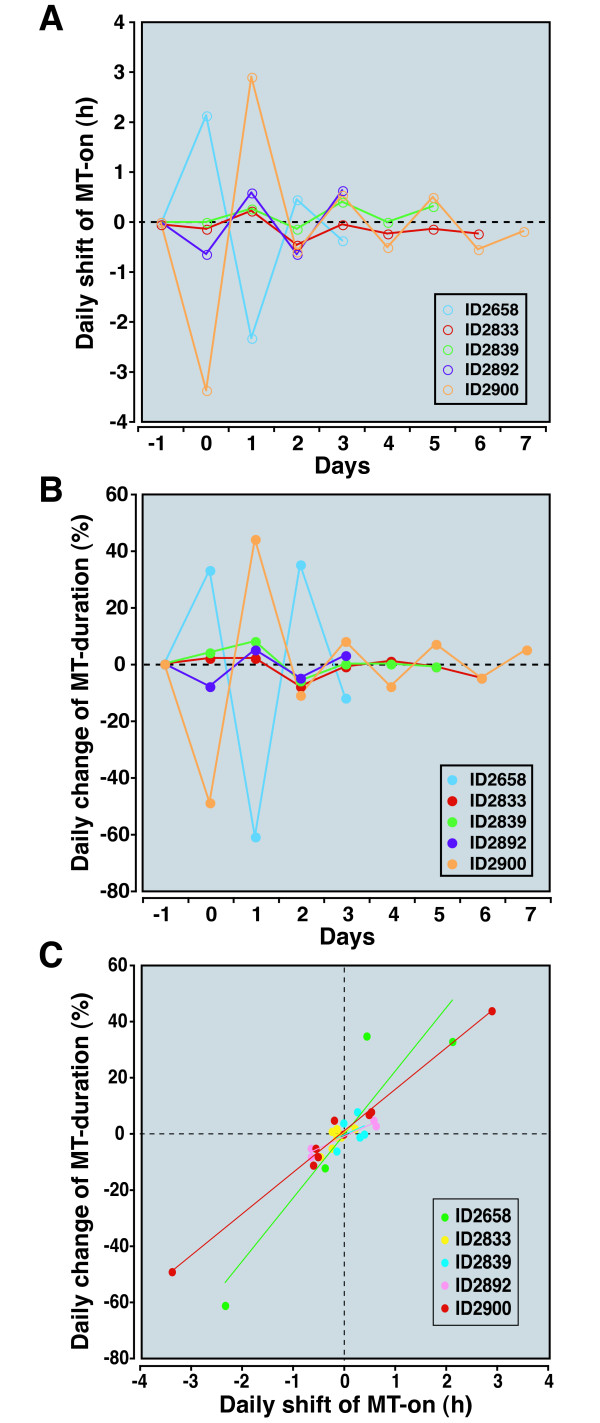Figure 8.
Day to day changes in MT parameters after stroke. The day-to-day changes in MT-on and melatonin duration were defined as the change in melatonin timing compared to the time on the previous day. As expected, on Day -1, there is no shift since the melatonin rhythm is stable. However, on Day 0 (the day of the stroke) there is a change in the melatonin timing compared to before stroke. Only five animals, represented by different colors, were used for this analysis. Other animals in the study could not be used because of gaps in data. (A) MT-on changes markedly in most animals from day-to-day. In all animals, there is a remarkable oscillation of the daily changes in melatonin timing. In general, the amplitude of the oscillation decreases over time. (B) A similar trend is seen with the daily change in melatonin duration. (C) There is a strong relationship between the daily shift in MT-on and melatonin duration among most animals. The r2 coefficients (for each animal) were: 0.85 (ID2658), 0.56 (ID2833), 0.15 (ID2839), 0.92 (ID2892), and 0.99 (ID2900).

